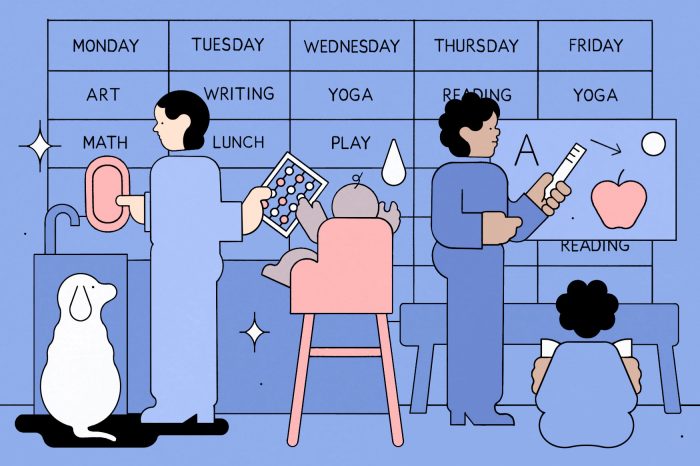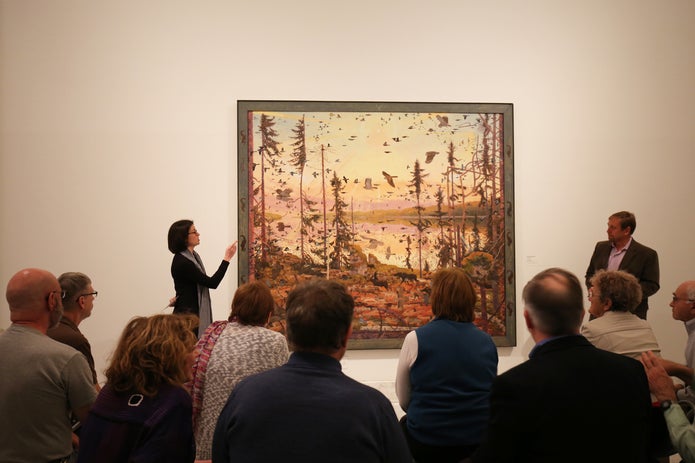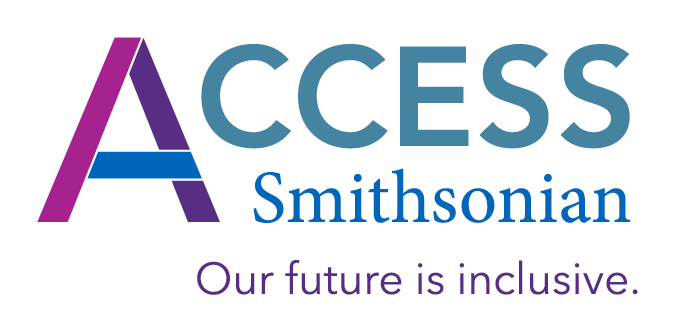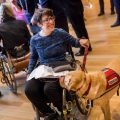Access Smithsonian shifts resources online
Parents of children with disabilities face special challenges during the pandemic. Access Smithsonian is helping them face those challenges head-on.
As the pandemic continues to impact daily life in unprecedented myriad ways, including the closure of most Smithsonian buildings, Institution-wide programming has shifted to the Internet.

Illustration by Nadia Hafid for the New York Times
For the office that plans programming for children with a variety of disabilities, parent input has been crucial in carving out a new role: that of a clearinghouse of Smithsonian educational programming parents and other caregivers can use with children at home.
“That first week [in March] we were all trying to scramble and pull together whatever we could,” says Ashley Grady, Senior Program Specialist at Access Smithsonian. Once she had gathered a list of links to interactive videos, activity suggestions and other content from across the Smithsonian, she pushed it out via email in a bid to support families whose work and school routines had changed almost overnight.
Suddenly working from home, Grady admits she felt helpless as to how to best aid the parents she’d come to know through Morning at the Museum, a popular program that allows families of children, teens and young adults with disabilities to visit a museum before it is open to the public. In the age of COVID-19, accessibility—or lack thereof—took on a whole new meaning.

A child wearing noise reduction headphones enjoys the aquarium during a Morning at the Museum program at the National Museum of Natural History. Morning at the Museum invites visitors with cognitive and sensory disabilities to the Smithsonian Institution museums before they open to the public so that participants can take advantage of the quiet and calm museum environment. (Photo by Jaclyn Nash)
“Everybody said they felt overwhelmed trying to navigate all these resources,” Grady says. “When you’re the parent of a child with a disability, you don’t have time to sit at your computer and figure out what you are going to do all day. And distance learning looks very different from school district to school district.”
Then she asked the parents on MATM’s email list and friends parenting children with disabilities for their input. Their replies contained several universal themes: “There’s so much stuff” online and “I have no idea where to begin.”
Grady shifted into high gear. Brainstorming with colleagues and friends raising kids with ADHD, ASD, dyslexia and other disabilities, she curated a list of options with her MATM parents in mind. “Everything I am sending I have looked through, knowing that hopefully [these resources] can be adapted or modified if necessary,” which might mean adding subtitles or audio captions, or truncating a 30-minute presentation to a more manageable 15 minutes. Virtual programming presents its own sets of challenges, as anyone who has tried to stream a film on a poor WiFi connection or sat through a Zoom meeting that freezes up knows all too well.
What did the Stegasaurus eat and other questions
Grady has by now compiled 12 resource lists for the parent group. Their feedback has been encouraging as well as helpful in shaping future lists, since “I have no idea when we will get back to public programming.” Among the comments:
- My son LOVED the short videos from the Museum of Natural History called The Doctor is In, and just submitted a question.
- Incredible resources that I didn’t know about – which I can share with my students and a ton of really great activities that I can do with my son.
- My daughter was enthralled in one of the museum online tours last week and used what she learned for her class.
“I cannot overemphasize how important it is to start with the community” of parents raising disabled children and ask for their preferences and needs, Grady says. “We need them to be driving the conversation.”
See Me
Programming for adults with dementia and their caregivers is also being translated to the Web, including See Me at the Smithsonian, an interactive program where participants explore two to three Smithsonian collection items the first and third Wednesdays of each month. Many senior citizens are at higher risk for contracting COVD-19, and Grady suspects their in-person visits to the museums in the future will be dramatically curtailed. “We need to keep connecting with them,” and that’s of course where the Internet comes in.
Since May 2020, See Me has fully transitioned to delivering virtual programs. To date, four museums (National Portrait Gallery, Smithsonian American Art Museum, Freer Gallery of Art, and National Museum of American History) have hosted virtual programs via Zoom and plan to continue this practice for the foreseeable future.

A See Me at the Smithsonian event at the Smithsonian American Art Museum, 2018. (Photo courtesy Smithsonian American Art Museum)
In addition, the Cooper Hewitt Smithsonian Design Museum in New York City hosts a similar program, Design Dialogues, on scheduled Sunday mornings.
For participants, there’s a logistical upside to virtual programming: no parking hassles, no waiting in line, and in many cases, participants can access the material at a time they prefer, whether it’s midnight or 5:30 a.m. Either online or in real life, the treasures of the Smithsonian can still enchant and educate.
“We want the Smithsonian to be a place of comfort and support during this really, really difficult time,” Grady says.
To be added to the Accessibility Office’s list of programming for young people with disabilities, or if your unit offers an educational program you think might be a fit, please email Ashley Grady at GradyA@si.edu.
The Touch Table
It’s off-limits for now, but the Office of Visitor Services’ new Touch Table in the Smithsonian Castle promises to add a new element of tactile exploration for visitors when the building reopens.
“The Touch Table is a model of the National Mall, with different SI museums and other landmarks in the general area,” Grady says. When you touch the different buildings, you can feel their contours and hear facts about their history and purpose.
While the largest target audience is individuals who are blind or low vision, it’s also intended for people who process information more effectively aurally than they do visually, Grady says. Yet even people without any learning or cognition issues enjoy hands-on displays.
The Touch Table has been years in the making, Grady adds. And one day, guests will return to explore it. “Tactile access is vital for making museums more inclusive and more accessible for all visitors.”
In reopening, we must expand—not retreat from—progress on accessibility
“We recently commemorated the 30th anniversary of the passage of the Americans with Disabilities Act (ADA). Having spent the past 30 years working to ensure the Smithsonian museums and National Zoo are inclusive and welcoming to all, I am proud of what we have accomplished there and at cultural organizations around the country since Congress passed this landmark legislation. Now, as museums begin to reopen during the “new normal” created by the pandemic, my hope is that we build on the progress of the past three decades rather than retreat from those efforts. In the words of the National Park Service’s longtime accessibility specialist Ray Bloomer: “People with disabilities were the last ones in. Let’s make sure they aren’t the first ones out.”
Read more from Beth Ziebarth, director of Smithsonian Access, in an op-ed published by The DC Line in July.
Posted: 10 September 2020
- Categories:








